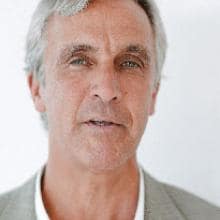Investing in Global Wellness Strategies for an Actively Aging Society

- Health at Bayer
-
Pharmaceuticals
- Treatment Areas
- Innovation & Technologies
- Cell and Gene Therapy
-
Sustainability
- Patient Access Charter
- Leadership Perspective
- Strengthening Healthcare Access
- Moving Non-Communicable Diseases Care Forward
- Ensuring a Sustainable Product Supply
- Delivering Better Cancer Care
-
Empowering Women, Globally
- Boosting Family Planning Usage through Digital Channels
- Capacity building: Addressing Root Causes through Partnerships
- Impact at Scale: The Challenge Initiative
- Promoting Awareness: World Contraception Day (WCD) & the Your Life Campaign
- Providing Accessible and Affordable Contraceptives
- Enabling Family Planning in Humanitarian Settings
- Fighting Neglected Tropical Diseases
- Transparency
- News & Stories
- Personal Health
- Report a Side Effect
- Medical Counterfeits
Policy changes must make way for market innovation to enhance functional ability as we age, says Michael Hodin, CEO of the Global Coalition on Aging.
“We want to make lives in the 21st century healthier and more active,” says Michael Hodin, the CEO of the Global Coalition on Aging (GCOA), “and we think this can happen through innovation and market enterprise. It also requires a change in public policy that responds to the shifting ratio of the old to the young across societies as they modernize and urbanize.” As the global business voice on the consequential mega-trend of aging, Hodin and, in turn, the GCOA brings together a highly influential group of companies across sectors and disciplines—healthcare, pharmaceuticals, technological innovation, financial services, home care and retail—to work together on strategies for business contributions that will facilitate global progress.

From Hodin’s perspective, there are two main areas of healthcare where innovation can play a central role: first, solutions for non-communicable diseases and second, changing expectations surrounding the ‘conditions of aging’. When it comes to addressing non-communicable diseases, including heart disease, Alzheimer’s and diabetes—which are drastically increasing along with societal aging and extended longevity—Hodin maintains that innovation to address these begins with technology.
“Spending on health innovation, whether on technologies that will enable earlier detection and diagnosis, or a medicine to treat vision deterioration or cardiovascular health, must be seen as an investment to enable healthier and more active aging, and improve functional ability as we age.”
The second area of focus for innovation, according to Hodin, centers on the ‘conditions of aging’. He explains that many developments that occur as we age, such as limited mobility, deteriorating vision and skin health, are regarded as the accepted norms of aging. ‘We profoundly challenge those assumptions,” he says, adding, “the new metric for success in healthcare, along with absence of disease, is wellness prevention and functional ability.” The latter is a cornerstone of the ‘Decade of Healthy Aging’, which the World Health Organization will declare at its 2020 assembly. Hodin explains, “functional ability represents a profound and fundamental shift in what we expect from health policy, and where innovations from medicine to technology can play an important role.”
The magnitude of the ‘global mega trend’ of aging, Hodin believes, is just beginning to be taken seriously around the world. As we experience increased longevity, governments, society and industry are all awakening to the scale of the challenges ahead. Japan leading the G20, the Chilean leadership of APEC—“where aging is ‘the’ issue”—and the European Council presidency is being taken over by Finland with its progressive policies on aging, all show positive signs of a new era. “Aging is at the level of other very large mega trends like the environment and climate change,” Hodin says. In every aspect of our lives, the governments must lead the way in implementing policies that will “allow markets to leverage the opportunities innovation that is right at our fingertips.”
This article is part of our “30 Years From Now“ series that asks innovators and experts on aging to share their vision of what the world in the light of the global demographic shift will or should look like in thirty years. Please find further articles below.








